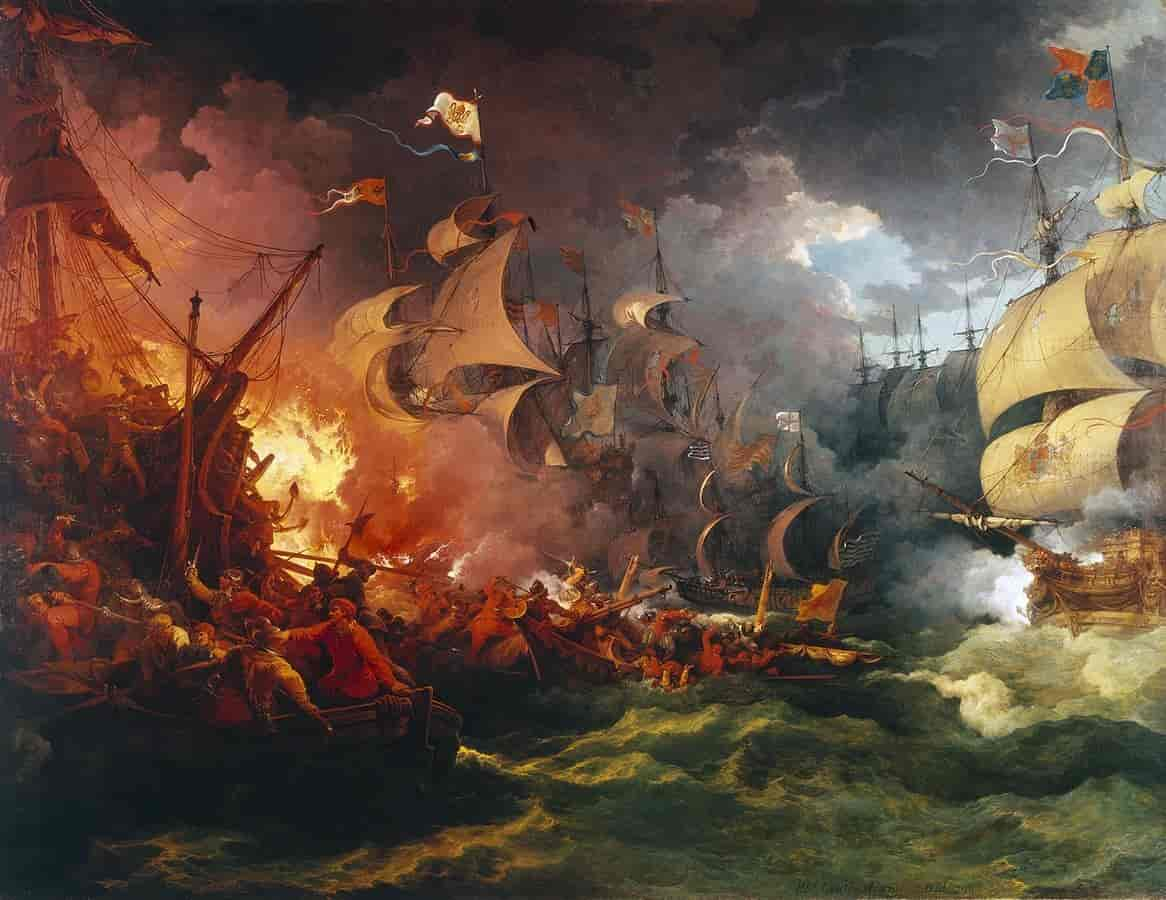Feb-2021
The Unlikely Tale of Filey and the Spanish Armada
The recent rediscovery of an Elizabethan map depicting the defeat of the Spanish Armada, and the fund-raising effort to save it for the nation, allows us to tell the story of the battle that never was and one that would have put Filey Bay at the epicentre of world history.
In 1558 Spain was the world’s superpower, with an extensive empire covering the Caribbean and South America. The riches being transported in Spanish galleons from the new world were a tempting target for English privateers such as Francis Drake. In an undeclared war English ships harried their Spanish counterparts, additionally tensions were high in the Spanish Netherlands where the Protestant English were supporting a Dutch revolt. The Spanish Netherlands was an area comprising of most of Belgium and Luxembourg, as well as parts of northern France, the southern Netherlands, and western Germany with the capital being Brussels. Thus the Spanish Armada was formed to invade England and overthrow the Protestant Queen Elizabeth.
However, Sir Francis Drake harried the Spanish Armada when they made landfall off Plymouth. He chased them along the south coast before his fire ships set up the Battle of Gravelines where the Royal Navy won a famous victory. Drake blockaded the English Channel and forced the Spanish to flee northwards. Their only route home being a perilous journey around the entire British Isles. As they fled up the east coast, they were relentlessly pursued by the Royal Navy.
What a sight it must have been to those watching from the shore. The Spanish Armada was huge; with 130 ships and 22,000 men it outnumbered its English foes three to one. As the beleaguered Spanish headed north, along the coast beacons were lit as a warning. Pin pricks of light ahead of the fleeing ships. On 8th August 1558 the warning flames lit the sky at Bridlington, it was acknowledged as the next beacon was lit at Flamborough, then Reighton and the watchers at Beacon Hill, Filey took the cue to light theirs, it was seen by Staxton and so it passed northward along the coast.
As the Spaniards passed Flamborough Head it was planned to engage them once more. But a check of the available ammunition revealed that the Royal Navy ships did not have enough for a full-scale engagement. The decision was made to continue to shadow the Armada until it passed out of English waters. Thus Filey Bay Was denied a place in the history books. No burning Spanish galleons and riches to be plundered by the locals. The Bay had to wait 200 years until 1779, and John Paul Jones, the Bonhomme Richard and the Battle of Flamborough Head before it witnessed it first major naval battle. How different it could have been!
Once the Spanish ships passed the Firth of Forth, the Royal Navy ships turned south, their job done. Although the Spanish had escaped from the Royal Navy, the British weather turned violent and as they passed around the north of Scotland, and then sailed down the west coast of Ireland, many ships were wrecked and entire crews lost to the cruel sea. Of the 130 ships and 22,000 men that left Spain, only 67 ships and 10,000 men made it home. It was a disaster for the Spanish and the moment that set Britain on the path to becoming a global superpower.

The Spanish Armada being attacked by Royal Navy fire ships.

comment this post